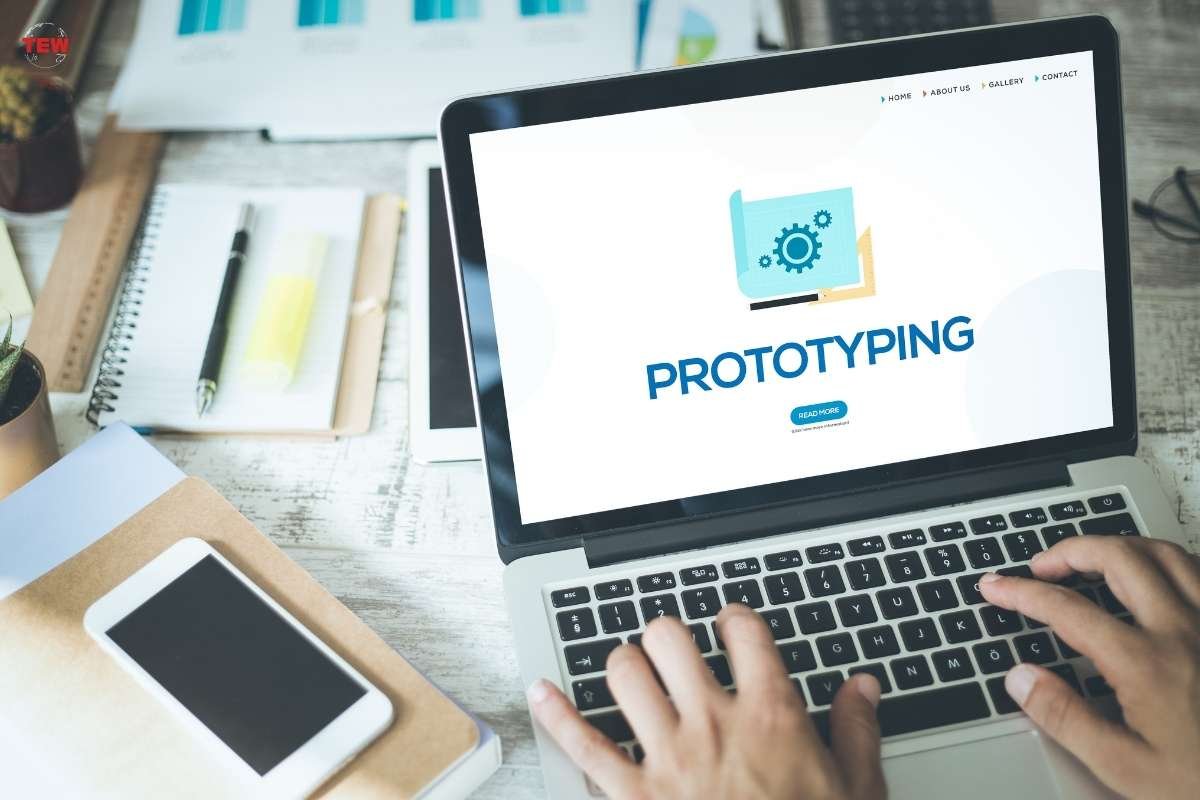AI in UX design is making a splash in lots of spaces. In this blog, explore how AI is giving UX designers a hand, the popular AI tools they use, and areas where AI falls short.
Why use AI in UX design?
AI refers to the capability of machines to imitate intelligent human behavior, and when applied to UX, it brings about several advantages for UX designers:
- AI automates repetitive tasks. This frees up time for designers to be more creative and boost overall productivity.
- AI looks at heaps of user info. This lets UX designers understand what users like and how they behave.
- AI can predict a user’s next steps. It does this by learning from the user’s past actions and tendencies, making the design process more intuitive.
- AI can enhance design skills. With AI being able to analyze large datasets, reveal patterns, and streamline tasks, you gain detailed insights that expand your expertise and lead to better designs.
How UX Designers Use AI?
User Behaviour Analyses
Good UX design means understanding how people use digital interfaces. AI in UX design makes this easier for designers through tools like Google Analytics or Mixpanel.
These tools collect heaps of information about what users do on a website or mobile app. They pick up on trends or patterns, like which pages users visit, how long they stay there, and which buttons they click (or how they leave quickly without doing anything).
Designers usually start by setting up these tools to collect the right data. They decide what info is important to know about user behavior. Once the tools are running, they gather the necessary data and look into the patterns detected by the AI.
After which, designers can then draw a user journey map, which outlines how users move through a website or app from the main page to completing a task. By doing this, they can spot areas where users might get stuck or leave, helping them come up with a better design that gives the users a smoother overall experience.
Tailoring Suggestions for Users
Designers set up AI algorithms to analyze how users interact with a website or app. This includes what they click on, how long they stay on certain pages, and any actions they frequently take.
The AI, being smart, processes this information and starts to understand the user’s likes and dislikes. With the insights gained, AI dynamically suggests content that matches what the user might enjoy. For example, if a user often clicks on tech-related articles, the AI might suggest more tech news or related content the next time they visit.
To make this even more precise, designers integrate user feedback into the mix. If users provide feedback on the suggested content, the AI learns from it. Over time, the suggestions become more accurate and aligned with the user’s taste.
this integration of AI in suggesting personalized content elevates the design process, making digital experiences not just functional but also uniquely suited to each user’s preferences.
Automated Prototyping

Creating many design versions manually is not only hard work but can also slow down the design process. Traditional prototyping use up a lot of time, limiting the chance to try different designs.
AI in UX design is automated prototyping significantly speeds up the process, producing layouts, wireframes and interactive elements with precision and efficiency. This faster pace not only helps with time but also allows for more dynamic and creative design versions.
A/B Testing Optimization
A/B testing involves comparing two design variations to see which one works better for users.
With AI, designers can look at different design variations in a dynamic way. It’s not just about comparing two static designs. AI adapts and optimizes based on what users are actually doing in real-time. This means designers get insights faster and can make decisions quicker.
Moreover, AI also helps designers figure out if the results from A/B testing are trustworthy. It guides them on whether the differences between the designs are significant or just random chance.
Accessibility Enhancement
Accessibility is about making sure everyone, regardless of their abilities or disabilities, can easily use and navigate digital interfaces. For instance, if someone uses a screen reader, AI in UX design ensures that the content is read aloud in a clear and understandable way.
So, with AI in accessibility enhancement, UX designers aren’t just creating interfaces. They’re crafting experiences that adapt to individual needs.
Heatmap Analytics and Optimization
Heatmaps provide designers with a visual snapshot of user activity. They show where users click, hover, or scroll, painting a picture of hotspots and areas that might need attention in the design.
Enter AI in UX design to supercharge heatmap analysis. AI doesn’t just see where users click, it understands why. By recognizing patterns and trends in user behavior, AI-driven heatmaps offer deeper insights, helping designers make informed decisions about interface improvements.
What makes AI-driven heatmap analytics even more powerful is dynamic optimization, meaning it not only points out issues but also suggests improvements.
By highlighting areas of high or low user interest, these heatmaps become a treasure trove of insights. Designers can see what captures user attention and what might need a bit more finesse, creating a user-centric and engaging digital space.
Visual Design Assistance
In UX design, how things look matters a lot. Visual design influences how users interact and feel about digital interfaces. AI helps designers by providing tools that make creating visuals easier – not taking over, but assisting.
It does so by suggesting improvements in colors, typography, and overall looks, thereby speeding up the creative process. Moreover, it ensures a steady and professional look across digital interfaces, sticking to branding rules.
Going back to AI streamlining repetitive tasks, it automates tasks like resizing images, generating design assets, and creating responsive designs.
So, AI becomes a vital part of design, supporting brand identity and a uniform user experience.
Recommended Tools of AI in UX design

Adobe Sensei
What it does: Adobe Sensei is an AI and machine learning platform integrated into Adobe Creative Cloud. It leverages AI to enhance various creative processes, offering features like content-aware fill, image recognition, and automated tagging.
How UX designers can take advantage?
UX designers can use Adobe Sensei to streamline their design workflow. For example, it can help in automating repetitive tasks, suggesting design elements, and improving image processing. This allows designers to focus more on the creative aspects of UX design.
Framer
What it does: Framer is a prototyping tool with AI capabilities. It allows designers to create interactive and realistic prototypes, and it incorporates AI for features like smart components and design assistance.
How UX designers can take advantage:
Designers can utilize Framer’s AI capabilities to create more intuitive and user-friendly prototypes. The tool helps in generating smart components that adapt based on user interactions, making the prototyping process more dynamic and responsive.
Sketch2React
What it does: Sketch2React uses AI to convert design files created in Sketch into fully responsive and interactive web components. It automates the conversion process, saving time and ensuring consistency.
How UX designers can take advantage:
UX designers using Sketch can benefit from Sketch2React by quickly transforming their static designs into interactive web components. This tool accelerates the design-to-development process, maintaining design integrity while making the transition to the development phase smoother.
Looka (formerly Logojoy)
What it does: Looka is an AI-powered logo design tool. It uses machine learning to understand design preferences and generates logos based on user input and industry standards.
How UX designers can take advantage:
When UX designers need a logo for a project, Looka can be a quick and efficient solution. By providing design preferences and industry details, designers can obtain AI-generated logos that align with the visual identity of the project.
ContentBot by OpenAI
What it does: ContentBot by OpenAI is a natural language generation tool. It can generate human-like text based on prompts, making it useful for creating content, microcopy, or placeholder text in designs.
How UX designers can take advantage:
UX designers can use ContentBot to generate realistic and contextually appropriate content for their designs. It helps in visualizing how the interface will appear with actual content, improving the overall user experience.
ChatGPT
What it does: ChatGPT is a language model developed by OpenAI. It excels in natural language understanding and generation, making it a powerful tool for conversational interfaces, content creation, and user interaction simulations.
How UX designers can take advantage:
- Conversational Prototyping. UX designers can use ChatGPT to simulate conversations within prototypes, testing how users might interact with a chat-based interface.
- Content Generation. When designing interfaces with dynamic or personalized content, ChatGPT can assist in generating realistic and contextually appropriate text, ensuring a more authentic representation of the user experience.
What AI Can’t Do for UX?

While AI serves as a powerful ally in UX design, there are a few things it can’t quite do as well as humans:
- Thinking Outside the Box
AI is great at helping with ideas, but it struggles to come up with truly new and groundbreaking concepts. Humans have this unique ability to think creatively in ways that machines can’t quite grasp.
- Understanding Feelings
AI doesn’t really “get” how people feel. It can’t understand emotions like a human can. Designing for a user’s emotional experience is something that needs a human touch because we can empathize and respond to feelings in a way machines can’t.
- Ethical Decision-Making
Figuring out what’s ethically right or wrong in a design isn’t AI’s strong suit. It doesn’t have that inner compass humans do. Designers need to bring their own sense of ethics to make sure the designs are responsible and considerate.
- Contextual Interpretation
AI struggles with understanding the bigger picture. While it’s great with certain tasks, it might miss the broader context, like cultural or social aspects, that human designers can pick up on.
Final Thoughts
In a nutshell, AI in UX design is a great assistant, making tasks faster and smoother overall. But remember, it’s just that – an assistant – as it lacks the human touch.
For UX designers, it’s about taking charge and getting good at using AI in UX design. Those who can make AI work for them will always be one foot ahead of those who aren’t.




